Being friendly to cats… is it worth the effort?
The adage “a cat is not a small dog” is as true as ever, and many veterinary clinics seem to be geared more towards treating dogs than cats. Pere Mercader reviews recent research that looked at how being a “Cat Friendly Clinic" can be good for business.
Article
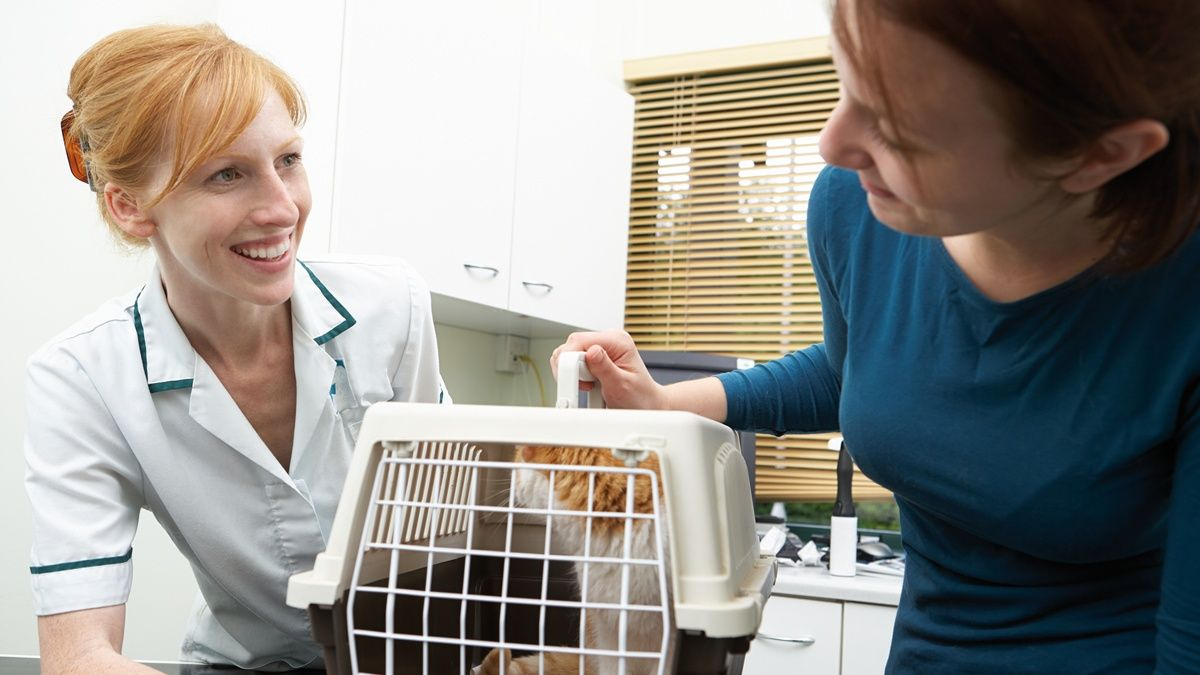
Key Points
Many cats find a trip to the veterinary clinic stressful; this encourages owners to avoid visiting the clinic, and can create a vicious circle.
A recent survey identified that there are many advantages in being accredited as a “Cat Friendly Clinic”.
Introduction
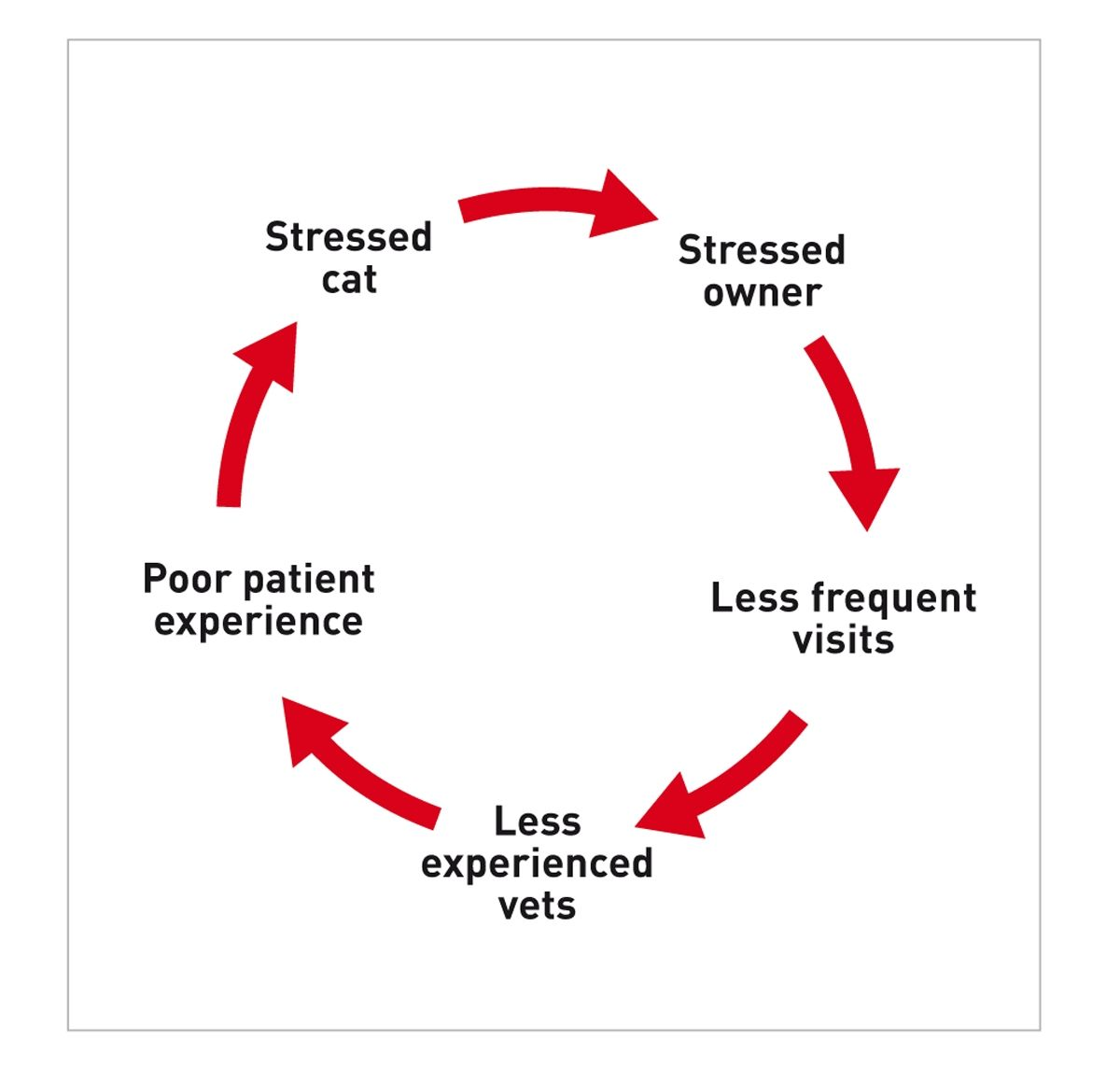
Cats have a unique nature and certain specific needs, which can make visits to a veterinary practice stressful for them, for their owners and for the veterinarians. This can potentially generate a vicious circle in which because cats are stressed when they visit the clinic, their owners tend to avoid or postpone these visits, resulting in veterinarians seeing cats less frequently than dogs and, as a consequence, becoming less used to handling them properly (Figure 1).
To address this issue, the International Society of Feline Medicine [1] designed a program — the Cat Friendly Clinic, or CFC
[2] — to help veterinarians create a more pleasant experience for their feline patients and clients (Figure 2). The program includes information and support materials to help the interested clinics achieve a higher standard of cat care and to obtain the corresponding accreditation.
Royal Canin recently asked VMS1 (Veterinary Management Studies) to perform a research project with the goal of answering the question: are Cat Friendly Clinics able to generate a stronger bonding with their feline clients when compared to “standard” clinics? A summary of the research methodology, the key findings and the main insights that were obtained are set out below.
1 www.estudiosveterinarios.com
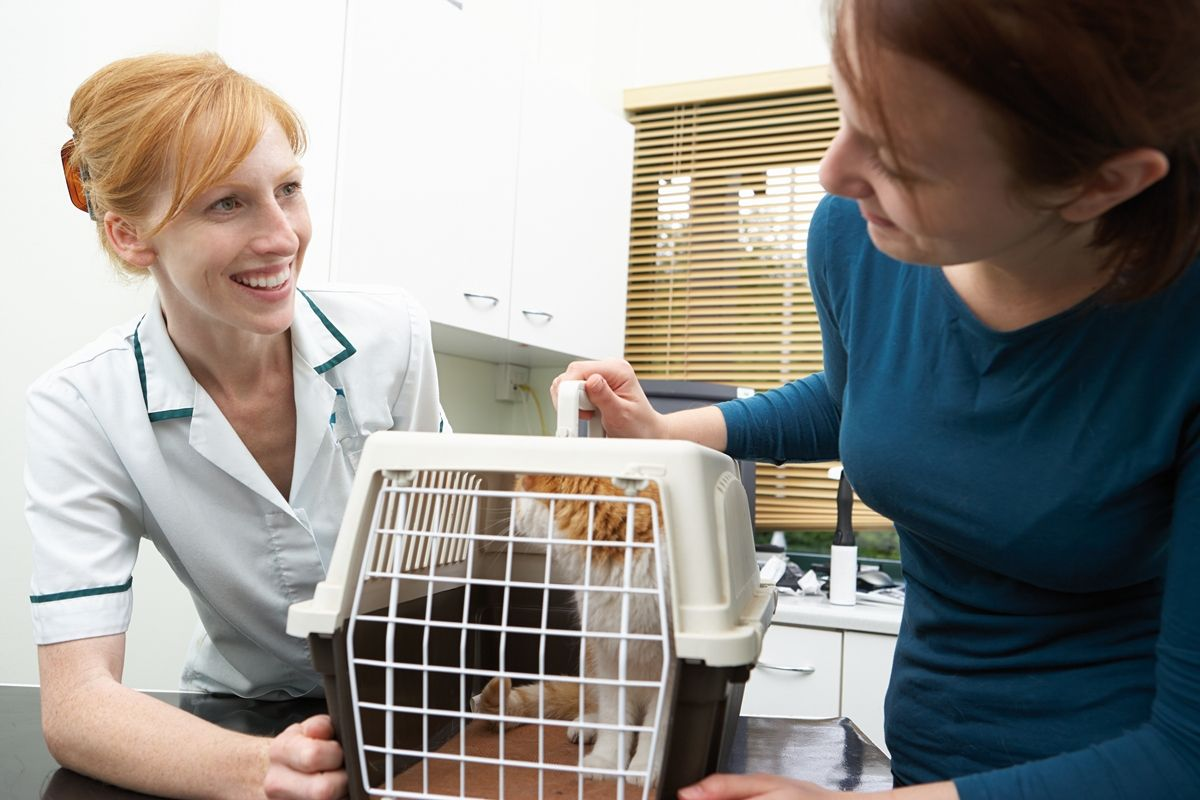
Research methodology
VMS analyzed all the economic transactions of 8,490 feline patients from a sample of 29 accredited Spanish “Cat Friendly Clinics” between 2015 and 2017. These were compared to the economic transactions of 123,674 feline patients from a second sample of 537 Spanish practices that were not accredited as Cat Friendly, across the same period. Statistical checks were performed to validate that both sample groups had a comparable geographic and size distribution to avoid these factors confounding the research results. In Spain there are currently 94 Cat Friendly Clinics, within an overall total of 5,350 veterinary centers. The key findings are best represented in graphic format, as shown.
Possible future research themes
Future research could aim at validating the hypothesis of a cause-effect relationship by studying the trend of these results before and after achieving CFC accreditation. From a clinical perspective, it could also be very valuable to measure compliance levels and overall health indicators in the feline patients of these clinics, the hypothesis being that this stronger bond should also result in better well-being. As an example, the research showed a higher percentage of sterilized cats in the Cat Friendly Clinics. Additional insights could also be gained by interviewing or surveying the feline owners who attend these clinics, to better understand their satisfaction levels and the key differential factors that drive Cat Friendly Clinics.
Key findings
• Cat Friendly Clinics attract a higher percentage of feline patients.
% of feline patients vs. total active patients
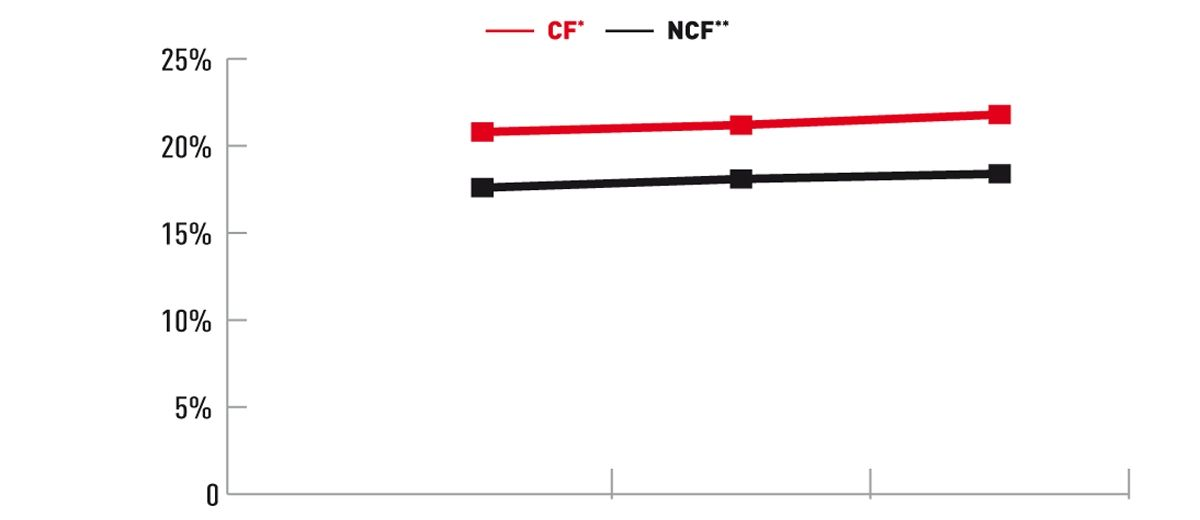
• Cat Friendly Clinics generate a higher percentage of their revenue from feline patients.
% of clinic revenue coming from feline patients
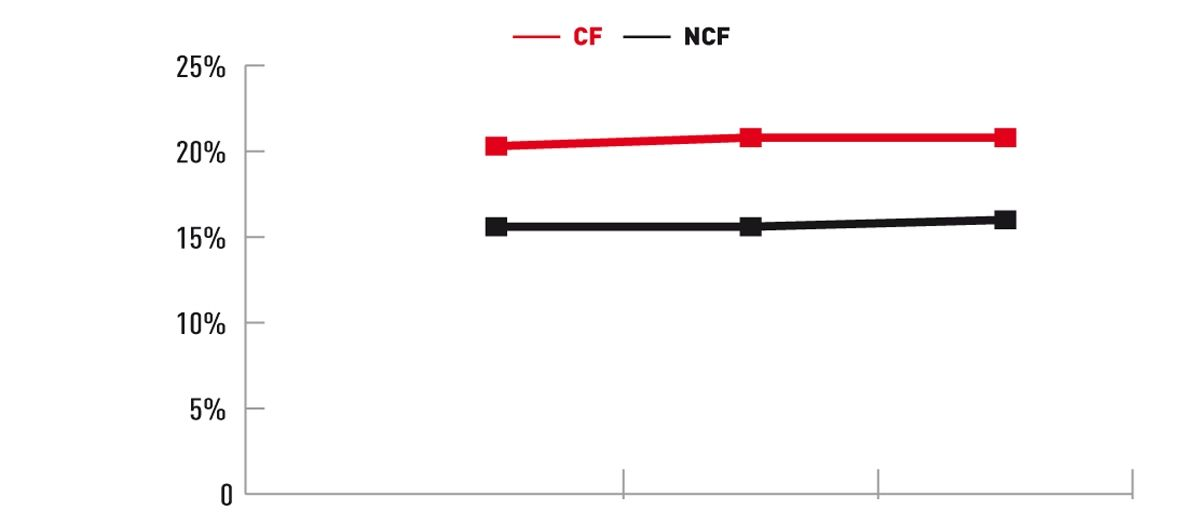
| 2015 | 2016 | 2017 | |
| Cat friendly | 20.3% |
20.8% |
20.8% |
| Non cat friendly | 15.6% |
15.8% |
16.0%1 |
| Total | 16.0% |
16.1% |
16.4% |
*CF: Cat friendly; **NCF: Non cat friendly
• Cat Friendly Clinics achieve a 30% higher frequency of visits with their feline patients.
Average number of transactions (visits) per year per feline patient
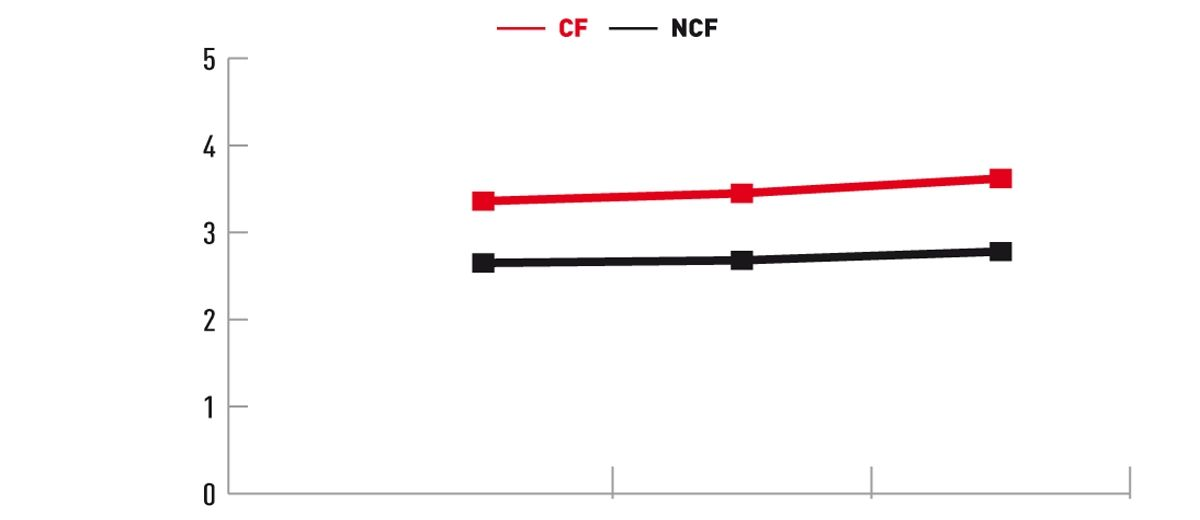
| 2015 | 2016 | 2017 | |
| Cat friendly | 3.36 |
3.45 |
3.62 |
| Non cat friendly | 2.65 |
2.68 |
2.781 |
| Total | 2.70 |
2.72 |
2.84 |
*CF: Cat friendly; **NCF: Non cat friendly
• Cat Friendly Clinics achieve a 12% higher average transaction value with their feline patients.
Average transaction in € value for feline patients
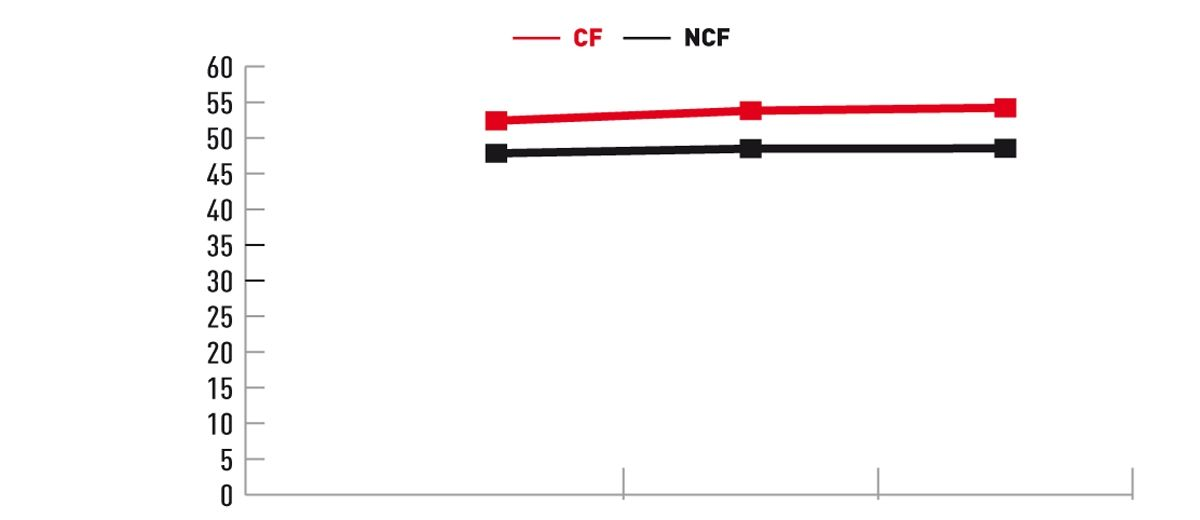
| 2015 | 2016 | 2017 | |
| Cat friendly | 52.40 |
53.81 |
54.22 |
| Non cat friendly | 47.84 |
48.49 |
48.531 |
| Total | 48.20 |
48.92 |
49.00 |
*CF: Cat friendly; **NCF: Non cat friendly
• Feline owners spend 45% more per year at Cat Friendly Clinics than for cats presented at “ordinary” clinics, and the gap is increasing with time.
Average yearly spending per feline patient
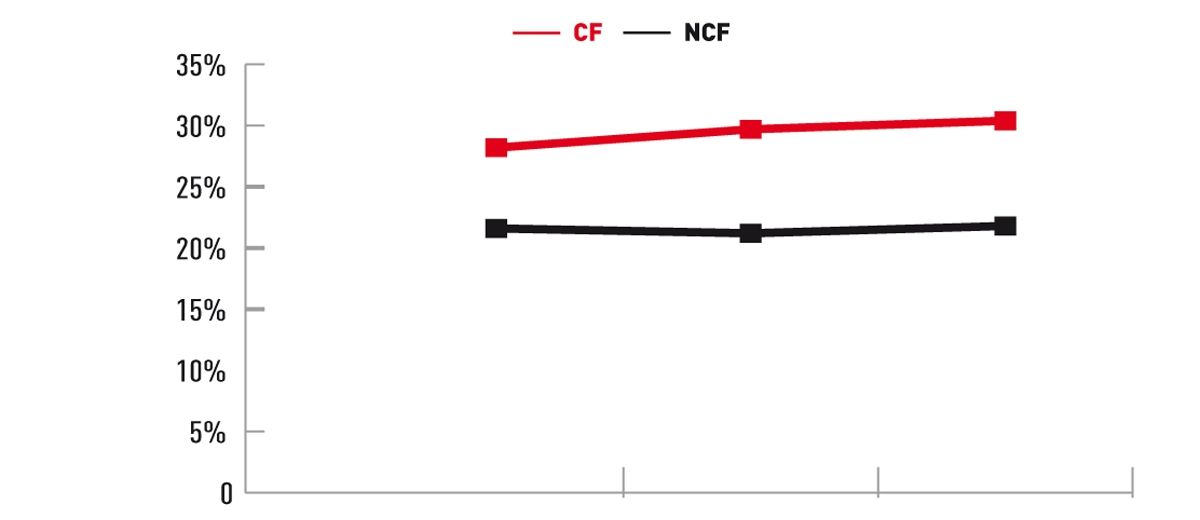
| 2015 | 2016 | 2017 | |
| Cat friendly | 176.29 |
185.90 |
196.50 |
| Non cat friendly | 126.80 |
129.74 |
135.01 |
| Total | 129.95 |
133.27 |
138.96 |
*CF: Cat friendly; **NCF: Non cat friendly
• 40% more owners of feline patients buy petfood at Cat Friendly Clinics.
% of feline patients buying petfood at least once per year
| 2015 | 2016 | 2017 | |
| Cat friendly | 28.2% |
29.7% |
30.4% |
| Non cat friendly | 21.6% |
21.2% |
21.8%1 |
| Total | 22.0% |
21.8% |
22.3% |
*CF: Cat friendly; **NCF: Non cat friendly
References
- https://catfriendlyclinic.org/ accessed 21st November 2018
- https://icatcare.org/isfm accessed 21st November 2018
Pere Mercader
DVM, MBA
Spain
Dr. Mercader established himself as a practice management consultant to veterinary clinics in 2001 and since then has developed this role in Spain, Portugal and some Latin-American countries. His main accomplishments include authoring profitability and pricing research studies involving Spanish veterinary clinics, lecturing on practice management in more than 30 countries, and authoring the textbook “Management Solutions for Veterinary Practices” which is published in Spanish, English and Chinese and has sold worldwide. In 2008, he co-founded VMS (Veterinary Management Studies), a business intelligence firm that provides a benchmarking service for more than 800 Spanish veterinary practices. Dr. Mercader was also a co-founder of the Spanish Veterinary Practice Management Association (AGESVET) and served on its board for eight years.
Other articles in this issue
Share on social media